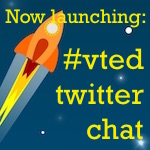I’m Jeanie Phillips and welcome back to #vted Reads: books by, for and with Vermont educators. Today is a little of all three, as we welcome instructional coaches Emily Rinkema and Stan Williams to the show. They’re the authors of The Standards-Based Classroom: Make Learning the Goal, and have been working on implementing and assessing proficiencies at Champlain Valley Union High School, in Hinesburg Vermont.
Proficiency-based education is something of a hot topic in Vermont.
In 2013, the Vermont legislature passed Act 77, which required schools around Vermont to implement personal learning plans, flexible pathways and proficiency-based learning for students in grades 7 through 12 by 2020. That. Is. Now. (Or at least it was at the time of recording.)
Anyway, Stan and Emily are old hats at the proficiency game, and their book is a valuable resource for working with educators who are new to proficiencies, especially as they relate to assessment.
This is #vted Reads: let’s chat.
Jeanie: Thanks for joining me, Emily and Stan. Tell us a little bit about who you are and what you do.
Emily Rinkema: We are proficiency-based learning coordinators. That’s our current title, in the Champlain Valley School District. We have been in this role but with many different names for approximately 10 years, I think, now. We also teach.
So, we’ve been teaming together as humanities teachers for 22 years, a long time and we still teach a course together now at the high school. We each spend half of our jobs at the high school supporting the continued implementation of standards-based learning, and the other half of our jobs are now at the middle school, supporting the implementation there.
Stan Williams: Yeah, we’ve taught from the ninth grade core program to this job and are now teaching a course called Think Tank. So, that’s been our fun new challenge.
Emily: We also about two years ago, wrote the book for Corwin, and since then we’ve had the opportunity to work with a lot of schools and districts not only in our state but around the country. And then most recently even internationally working with a few schools. So, that’s been really amazing to see how different school districts interpret the same principles of learning.
Jeanie: Yeah, I went to a workshop with some of the teachers I work with that you two had, on proficiency-based learning or standards-based learning. And one of the questions I know you must hear and that I hear all the time is:
How long will it take before we get there?
And what I’m hearing from you in your role as coaches in this work is that it’s not a one and done but it’s an ongoing process to getting there.
Stan: Yeah, I think that any time if you actually ever think you’re there, there’s probably a misunderstanding, because I’m not sure there’s ever going to be a “there”. But yeah, that’s one of the big things that we’ve had to grapple with and that especially adults, as educators, have to grapple with. The fact that it is *not* “here’s the box, open it up, take it out, and now you are a standards-based teacher!” And I think that’s often what the thought is” give me the program, give me the answer, and I’ll do it. Or: give me the sheets and I’ll do it. Which is not the case.
I think that also is one of the things that leads to some difficulties. People will look to change the grading and the reporting, but then not get to the fact that it’s the instruction, it’s the assessment — it’s all the work in the classroom that needs to change as well.
So yeah, I think that’s the biggest part of our job, probably, dealing with that other part.
Emily: Yeah, it’s really changing the fundamental beliefs about teaching and learning. I think we often hear teachers will say, “Oh, it’s another initiative coming along,” and thinking that we can have some professional development around it and we’ll just add it to our bucket of other initiatives.
But it’s really changing the foundation of learning.
It’s not adding strategies or practices on to what we currently do. It’s actually *shifting* what we currently do, which takes a long time and a lot of mistakes, a lot of iterations — before we start to feel like it’s effective.
Jeanie: It feels to me like it’s a mindset shift. And that if you shift your mindset in this way, then what you realize is that there’s always room for growth.
Emily: You know, it was funny we were just talking about mindset versus skill set yesterday. And there’s a lot of research that says that in any large second order change, you need to shift mindsets first — before you can actually start to see any positives or start to change your skills?
When we change mindsets… prior to actually being able to support the new mindset? Then we can run into some real problems. So, we’ll see teachers who will shift their mindsets about teaching, so that the idea is: learning becomes more important than teaching, right? So, what students learn becomes much more important than what we’re actually teaching, because it’s irrelevant if they don’t learn what we’re teaching. But if we don’t change the systems and structures of our classrooms and schools to support that new mindset, then very quickly that mindset runs up against a wall.
Jeanie: So, what I’m hearing from you is a chicken-and-egg kind of scenario where we need a mindset shift, but we need the skills that support that, but we need the skills in order to have the mindset shift.
Emily: *laughs* Yes.
Jeanie: It seems like they go hand in hand.
Emily: Easy.
Jeanie: I can tell that you’re both systems thinkers by the way the book is organized and particularly the thing I admire about the book is that you are proponents of backwards design and you organized the book that way, that as you begin with articulating desired results and developing KUDs (“Know, Understand and Do”) and learning scales and learning targets, you also create learning scales and KUDs and targets for your readers.
And I found that to be so powerful. You’re not just talking about what you can do in the classroom, but you’re modeling what it looks like as you developed your book. And I wondered how that emerged. What inspired you to organize the book in that way?
Stan: Yeah, as far as I can remember, it started as the planning structure and an organizational structure we had developed kind of categories and learning targets and skills for our work with the faculty and for the faculty at CVU.
Again in thinking if we were going to try to help lead adults to use learning targets and skills, then it made the most sense not only to have them experience that, but for us to work on that and refine what we’re really looking for. And so I think at first we really used it to [ask]:
- What would we say about these things?
- What would we say about this?
- What do we have to talk about this?
And then again, it quickly became apparent that, wait a minute, this makes the most sense as far as the organization. So, I’m not sure it stayed in organizational strategy for long. I think it pretty quickly became the book itself? But I think that is how it began.
Jeanie: I just have such deep appreciation for that. I detest professional development that doesn’t walk the talk. Like, I really dislike sitting in professional development sessions that are disingenuous, I guess. It feels like to me like: do as I say, not as I do. And the one that sticks out for me the sort of counterexample that always is in my brain is many years ago, sitting in a very large school cafeteria with 150 other teachers learning about differentiated instruction… in a way that was completely undifferentiated. Pot meet kettle, right?
Like that was the height of hypocrisy for me. And so I just had this deep appreciation as I started engaging with the book in how you treat the reader as learner, right? And how you respect the reader as learner and use the structures that you know work for good learning, with the reader. So, kudos for that.
Stan: Thank you.
Jeanie: One of the questions that I have as a reader and I really have been using this work with districts I’m working with, and with a district in particular that I’m working with — they’re reading it and it’s been a great tool for us in helping them to develop the skills they need to make the shifts — but one of the things that I still question, or I still have questions about, is the congruence of this with personalization. Like how do we leverage KUDs and learning scales to… sort of, meet the other pillars of Act 77, flexible pathways and personalized learning?
Emily: I’ll start with I think there’s a big misunderstanding, misconception, that standard-based learning is standardization. And that couldn’t be further from the truth.
Unfortunately I think in some places, those are a little closer together than others, so it can sometimes get that bad name. We’ve taken an approach in our district of using skill-based learning targets. And our content is communicated through KUDs (as we have in the book), but what that allows is a lot more freedom and flexibility. So, we know what our end goal is, but how we choose to get to that end goal is where we can have a lot more flexibility.
I think it provides us a lot more autonomy, but also for students so we have a lot more flexibility about what content we use, what content we go into depth with different students?
There’s a greater opportunity for students to design their own learning, because we can head towards the same outcome, but they can propose how they want to get there.
Stan: Yeah, I think in reality when we look at a couple of the seeing that in the classroom, a couple of examples again. For instance, I think in our Think Tank class.
Students have common learning targets — four to five — that we really use throughout from the iterative process to summary of multiple resources to use of media and some others. But the idea is though, in our class we have a common theme about improving education and learning and engagement within our school district? But they allow us to let students personalize based on their, based on kind of their wants, their desires, where they get kind of drawn into the class and into the reasoning.
And so what’s great is you can have students working on something around standardized testing or something around the architecture of school or the arrangement of classrooms or around mental health or around wellness or around starting a student congress. And all are focusing on the same learning targets and scales? But with really ideas and issues that they care about and that they’re able to go with.
I think the other thing we found is that with, as Emily spoke to, with the transferable ones, that great help for differentiation.
When we first started this years ago, when we did 10 years ago or so we took a sabbatical that was focused on differentiation. And one of the first things we came to was what people were trying to differentiate tended to be content and second to be: are you getting the answer right or wrong? And that was pretty difficult because that’s where you get a lot of people. Yes, people were slowing down because we were waiting for other people to get it right. And so that’s when we realized we needed these transferable targets and scales.
And then, you know, again, now we’re coming back to I think the need for more and more training with differentiation. But yeah, I think they go hand in hand with the personalization.
Emily: I think there’s also a misunderstanding about personalization a lot of times? That personalization is just allowing students to do what they want, when they want, where they want, how they want. And I think that standards bring integrity to personalization. So educators can ground the personalized work in particular skills or skills that a student chooses, but I think it reduces the risk of the sort of fluffy personalization that gives personalization such a bad name?
So, just as I think the standards-based practices can get a bad name when they become too rigid. I think they offer a really nice balance to each other. Without personalization, standards-based learning could be pretty… regimented. Could be pretty… well, standardized. Which is not what it should be. So I think they need each other.
Jeanie: You’re making me think a lot about how we talk about personalization, flexible pathways and proficiency here at the Tarrant Institute.
Which is we think of them as not separate but as like DNA strands wound together.
And so I think in order to provide flexible pathways, you have to know your students well. In order for those flexible pathways to be meaningful, you have to know what the targets are.
And the proficiency-based system helps you develop flexible pathways that matter, and that’s what I’m hearing from you as well.
Emily: Yeah, absolutely. I like the visual of the DNA strands.
Jeanie: Yeah. And that leads me to your section on summative assessments. And so I really one of the things that I’ve noticed as I — both when I was in a school library and I was designing proficiency-based units of study, and collaborating with teachers in the design of proficiency-based units of study, but then also as I coach teachers now — is using this kind of a framework, the backwards design framework with the learning targets first, allows you to find where misalignment happens, right? Like where your instruction is actually not instructing on the things you’re assessing on and is not related necessarily to your targets.
And I think there’s this big a-ha moment that happens for teachers the first time they do this where they realize, “Oh! I’m not… Wait a minute, this doesn’t always hang together well.” And so I really love that about your framework and I wanted to know, specifically as we work with middle school students about: how do we do what we were just talking about, which is use these learning targets and these learning scales, to open possibilities to young people for how they show what they know what they can now do. It’s a convoluted question.
Stan: Yes. Funny, the word that comes to mind obviously when you talk about that is “intentionality”, right? And I still remember years ago I think when we first started this, we were at a Carol Tomlinson workshop. And at the time I believe she was introducing or focusing on the KUD.
And I still remember, like you said, the a-ha moment as she was talking about and kind of had a calendar under it and was showing how this was the time they were going to address this and then they were going to have time to get into this understanding, this understanding is where they were going to use this content to drive this understanding and that oh my gosh, like, this is so much more intentional than, “this is going to be a unit on X” or “this is going to be a unit on Y”.
And so I do think that that intentionality is such a huge part of this. And I think that’s the thing that’s probably hit us the most, is that intentionality that does get driven from that summative and from that endpoint.
I also think that there are times where that summative is something that’s predetermined? But then there’s also that time where that summative is around a concept. It’s around an idea, it’s around a theme. We know the targets that we’re going to be getting at to get to that, or how they’re going to be demonstrating some of the skills at the end, but that there can still be plenty of choice around what that summative looks like.
So, I think that is one of the keys is: do we know what are the skills we’re going to try to get better at within this unit? But then, how do we have flexibility at the end and along the way, but if we’re talking summatives, how do we have flexibility at the end to allow students to demonstrate those in different ways?
And again, I think going back to what Emily was saying earlier, that standardization is where I think sometimes that it’s a misunderstanding.
Again, it gets back to what we said in the very beginning; it is not just a grading mechanism.
It is not that now I’m going to take the old test that I have always had and I’m just going to change how I grade it and I’m putting a one through four on top of it rather than an 87 on top of it.
We still see that happen and I think that’s where programs, schools get in trouble is they try to is just a conversion. And so but that’s where a lot of our work is, how do we make sure that our summatives are driving our work forward and that the summatives are opening up the learning rather than kind of narrowing the learning?
Emily: That was very well said.
[laughter]
Jeanie: It made me think about my own growth as an educator and when I shifted over time from, — I’m getting vulnerable here — when I shifted over time from sort of a checklist approach of “your slideshow will have this many slides and it will have this” right? Like this checklist approach or rubric approach to scoring work to thinking about what the learning is, right?
And what I love about learning targets, whether you use them in a learning skill or a single point rubric, is that there are so many different ways to express that you’ve learned that? And that’s that opening I think I heard from you, Stan? Instead of that confining — you must have three sources, you must list five descriptive words about your topic or whatever it is, right? The date of birth and the date of it, like silliness. As opposed to like, what’s the real skill we want kids to be able, what’s the real thing we want them to be able to do?
Emily: One interesting change with summative assessments and our own teaching is I think in the first 10 years of our teaching, our summatives looked almost exactly the same. And that was the intent, right? So, we had a clear idea of what this would look like whether it was a kind of conventional test where we actually literally wanted them to be the same because we wanted the same answers, which were the correct answers. Whether they were essays that would come in and we would, you know, have a stack of 100 essays and those looked almost identical to each other and they might have selected different evidence, but our requirements were so strict that they pretty much looked the same.
Now, since we shifted to a standards-based classroom, I can’t think of a time when we’ve had any summative assessments that did look the same or that we wanted them to look the same.
Stan: No, and what’s funny about that is, I can think back to when you’re teaching in the ninth grade and you’d have 110 students and you were getting 100 and then — going back to the vulnerable pieces you’re talking about — you’re getting 110 of the same thing. Try grading 110 of the same thing as we all know, right, what that does!
And I remember a few years back Emily saying to a group of people how she looked forward to getting summatives in now because it was exciting to see. And I remember a laughter from some of the people.
But that’s absolutely true there is now there’s something so exciting because you’re getting all these different, you know, whatever it happens to be products that you’ve been working with and helping along the way, but there’s personality to them, there’s a voice to them, there’s an individuality to them and a uniqueness to them, which makes them exciting to see and to learn from rather than kind of feeling obligated to go through. So, that has been a really fun shift from our end.
Jeanie: It’s interesting to me because I’m a doc student now here at UVM. I’m in the education policy leadership studies program and I have this professor, Kelly Clark Keith, who’s really interested in other ways of knowing and other ways of being, right? And so she’s really pushing us to think about that you don’t have to just choose the standard research model, or the standard way. We could do our dissertation in the form of a poem if we wanted to, right, like she’s really encouraged. (I’m not going to do that. Nobody wants to read my poems.)
But and so I’m taking a class with her this coming semester called Modes of Inquiry. It’s really about thinking outside of that box and honoring other ways of knowing. And being and it seems to me when we open up summatives and give kids possibility and choice, we’re honoring the many ways of knowing and being there are. As opposed to forcing everybody to conform to one way of knowing and being. And I there’s just something really… caring about that. Sorry to take you down my mental path.
[laughter]
Emily: We’ll, read your poem.
[laughter]
Jeanie: An “Ode To Formative Assessment” is next. I really love the chapter on formative assessment and it’s all underlined and highlighted. It was my favorite section. You really helped me —
Emily: That’s the chapter with the murder, right?
[laughter]
Stan: Like the car crash.
[laughter]
Jeanie: I just found that to be a really rich chapter both in thinking about ways of orchestrating timely feedback for students and also just some of the strategies you share about how to do that. And I specifically carry around in my head as a tool this idea of short, specific and sortable data that you can get from students, to determine what needs to be taught or where students are.
So, I wondered if you could talk a little bit about how you go about that in your class. Maybe give us an example.
Stan: Yeah, I’ll start with a little bit and maybe I’ll throw it to you for an example. But I do I think formative is probably — I probably shouldn’t say the most important because I would probably end up questioning myself. But the formative assessment is in many ways the most important, but also then the most misunderstood, or underutilized. I think one of the things, you know, we see is old the assignments are used and then they say, well, it’s formative. Well, actually formative towards what? One of the biggest things going back to that intentionality that you were speaking of earlier is that ability to shrink the field to a point where I can get that quick, usable information about where you are on that scale, on that kind of learning journey.
And so for us, you know, unfortunately, we haven’t been able to create more time in the universe? But where I think we have shifted our time; the time we used to spend grading and going through and writing and all these things, on endless amounts of homework — and some of the homework which may have been sitting in a pile for two weeks before I could get to it to kind of maybe not even get it back to you, but get it recorded in some books so I could write that you did nine out of 10 on this — that time has gone away. And instead, we’ve really worked hard to craft, like you said, small, really intentional formative assessments that are done in class. All the time done in class. We never let those go out. And with an intent to give us some quick, actionable feedback.
I think one of the biggest changes for us was that idea of it’s not about if I’ve taught it, it’s about if you’ve learned it. And that also that assessment is really for the teacher.
I think we used to think that assessment was for the student; here’s how you’re doing for maybe for the parents back home, here’s how they’re doing, when in reality assessment is for the teacher. And if the teachers aren’t using assessment to then drive their instruction and their practice, then they’re, I would say, misusing or underutilizing the assessment.
So, for us formative assessments are really made to be one specific — in our class and in our terminology — one specific learning target scale.
Again, we can get something that’s quick and by sortable meaning we can sit together and we can very quickly look and place them kind of in the same piles that would match up with the scale ensure a time there might be outliers on either side, and that’s something we could talk about later, but that we can now spend the time really focusing on how are we going to address the people that are at these levels of this. Because what this group needs is different than what this group needs and maybe different with this group needs. And then what this person needs is different, which obviously gets us back into the differentiation. But it allows us the time to focus on our planning and the structure of our class, versus the recording of information that wasn’t really driving us anyway. So, I think that’s kind of been the impact on us. I’m going to hope that gave you time to think of a good example.
Jeanie: Before you give an example, I just want to say: what I’m hearing from you, because as you’re sorting through that data, those quick exit tickets you’ve gotten and saying, “Oh, these people are at this place in the learning scale, or these folks don’t get it at all, these folks get it a little bit, these folks really have got it and they’re ready to move on”, right? A lot of times when I’m working with teachers, they’re like, “What, do I have to have like 22 lesson plans?”
And what I’m hearing from you is that these, that formative assessment allows you to group kids, so that everybody is getting what they need based on where they are, but that it’s still not one size fits all. It’s also not 22 different sizes.
Stan: That’s a great distinction and thank you for making that. Yeah, and again, not that it always works out perfectly like this, but that idea that again, where we’ve all in the past written more or less the same comments on 12 different papers or on 12 different assignments and then gone and record that. Whereas as we had that pile, we know that some direct instruction perhaps the next day maybe five minutes that gets that group on whatever that next task is or that work with it. And so yeah, there is often that thought that it has to be 22 different ones.
There’s also often that thought that I have to make it all up the night before. And what we’ve tried to get at is, you know that there will be kids in these groups. Now you may not know ahead of time what kids are going to fall in these groups, but you can still have plans about:
- How will I differentiate for the evidence target?
- How will I differentiate for my claim target
- And how am I going to differentiate for my relationships target?
Again, I might not know the numbers and who’s there, but it doesn’t mean that it has to be I can’t plan some of it prior to having those piles and I think that’s an important distinction as well.
Emily: Yeah, and the scales are really essential to that. So, having really well written, kind of tested scales that have, you know, fully articulated levels? That really helps us with the sorting because it’s not about comparing work to other work.
So, when we go to when we get that pile of 50 formative assessments in, it’s not saying, well, this student’s work is better than this student’s work and then putting them in a line of 50 of them compared to each other. We have four very distinct articulated skills or levels of a skill. We’re sorting the work into those four levels.
And again, as Stan said, there may be outliers as well that don’t fall on the scale for some reason? But the better our scales, the faster that process is. We often use that process to revise our scales as well. Because we’ll make our piles and then look at what does all the work in this pile have in common? So, what can these students do? Which then helps us write the language of the scale at that level?
But I think with without the clearly articulated scales at those levels, not only is the sorting harder, but the planning for the differentiation is harder. Because then we think well now what do we do? I know these students aren’t at the target, but I’m not quite sure what to do for them. Whereas when we have the language of the increasing levels of complexity of the scale, then we know that we need to design practice or instruction in order to get students to be able to do what’s in each of those boxes.
Jeanie: So, I’m hearing a couple of themes emerged in my brain and one is iteration again, that you create scales, and then you look at student work and you revise your scales.
Emily: Absolutely.
Jeanie: As well as re-teaching the students if they need it, right? And so this is an ongoing process of always fine tuning your scales.
Emily: Our courses have a limited number of learning targets which allows us to be able to dive in and revise and spend time with each target and each scale. Some schools are working with hundreds of learning targets and immediately think, “You mean, I have to have a scale for every one of these learning targets, and then I have to revise it and then I’m sorting work based on it and then differentiating based on it?” So, it becomes quickly overwhelming.
Stan: Yeah, I think if I had to give people advice who are at a school if you’re getting into this and starting some work with the faculty around this, again, it’s this it can’t be seen that these scales are for assessment and assessment only and for putting something at the end and getting teachers to actually live and feel the scales and getting them to try to do the work at these levels/ We just shared an article we’d seen on Twitter about, was it called dogfooding? A tech term right, about what do you actually do:
- Do you do what you’re saying?
- Are you doing your assignments?
- Are you doing your homework?
- And are you actually so you can figure out what are some of the stuck points?
- Well, how can my directions be better?
- What parts are going to be confusing for people?
And so I think that for us, yeah, that was where it takes a lot. I can think of a graphic representation learning target and scale that we had and we struggled and struggled with the class. We would get things back and like this isn’t what we’re looking for and we ended up taking it off of an assessment because we just we realized we hadn’t gotten kids even close to where they needed to be. And that was on us. That certainly wasn’t on them. And so we took it off that assessment.
And we worked with them and by the start as the next year, we had really figured it out and with because we knew the scale, because we understood kind of what it meant and what we meant by it and how to instruct it? Within two days, they had gotten far beyond what our group had gotten over the course of about two months, the year before.
And that had nothing to do with the students. That was purely that we didn’t really understand what we were asking for.
Which again, sounds silly or strange, but going back to it, I think when, again to that vulnerable piece, when you look back and try to talk to people, we don’t really always know what we’re asking for or what we’re looking for. We may have an idea or a topic or an assignment, but what are you really, what are you trying to get better at? What’s this skill I’m trying to get? What do you want people to understand from this?
I think that’s often a little bit either misunderstood or people haven’t thought about it as much as they could. Or should.
Jeanie: So, I’m hearing from you — what’s ringing for me is clarity and intentionality again, right? And I love that idea of dogfooding.
I’m a School Reform Initiative facilitator, and there’s a great protocol where you ask a group of people to complete at least part of an assessment before then having a conversation about what are students actually working on here? What is it that we’re…?
It’s I think it’s a great tool for standards-based or proficiency-based or competency-based education systems to really get at that.
Because I can’t tell you the number of times my kid who’s really good at thinking about current events or social studies, would work really hard on a paper, an essay, always an essay. And come back with a B or a C because of his grammar usage and mechanics, right? Like he’s being scored on one thing when he’s supposed to be thinking about themes or causative factor or some other thing, right?
And then his grade is always about whether or not he used commas appropriately.
Stan: Yeah, I think that goes back to that shrinking the field. That idea with a lot of those formatives. And so, you know, cause and effect is important. Being able to see relationships is important. There’s grammatical stuff that’s certainly important, but how do you parse those out so that you’re sure you’re focusing. Not only you’re focusing on the right one, but the student knows what we’re focusing on and what we’re trying to work with?
Emily: Yeah, I was working with a teacher yesterday, a middle school teacher and science teacher and she was working on evidence and reasoning. So a learning target. And she was showing me examples of student work and was getting frustrated the students were getting stuck before the reasoning. So, they were nailing the evidence, but were really getting stuck on sophisticated reasoning. And so she was explaining what she was doing and she said, “Well, I asked them to come up with a claim. So, we watch it, we view a phenomenon, they come up with a claim, and then they do their evidence and reasoning around that claim.”
We started looking at some of the claims and some of the claims they were coming up with were not sophisticated enough to allow for or require reasoning to require a sophisticated level of reasoning, right? So, they were these simple claims that really led to a student being able to prove it with one or two pieces of evidence. And they were so obvious these claims that there was no reason for the student to have to reason. So, she quickly came to the like, wait a minute, what if I were to provide them with the claim that was more complex, then what would happen to their ability to reason? So, she was able to seems, as Stan said, shrink the field and think about what is it that’s getting in the way of their ability to do the skill I’m actually trying to instruct and assess? So, the coming up of the claim isn’t one of the skills that she was trying to instruct and assess and yet it was the thing that was getting in the way of their ability to think more critically.
Jeanie: So, I want to poke at this a little bit because I have some curiosity about something. So, what I’m hearing from you actually is that that the teacher’s job, the educator’s job is really to engage in: what’s the pattern of learning that happens? And to experiment with that a little bit, right?
Like what I heard you just say is about a teacher experimenting with “What would happen if…? And they’re not doing this, so what if I…?” And I love that. For me as an educator, that’s way more interesting being like, that level of engaged — than doing the same thing, teaching the same thing in the same way all the time.
But. I’m also thinking about this book you may have read, The End of Average: How We Succeed in a World That Values Sameness.
Emily: I’m familiar with it, but I haven’t read it.
Jeanie: So, we did an episode on it this fall. This book has stayed with me a lot, because one of the things he points out is that there isn’t one path — and he’s talking a lot about how average has impacted our lives in this country and in the world and how that came to be. And that like we have this notion of having had an infant I remember this that that kids would gain a certain amount of weight, that they crawl before they walk, right?
But that when we look worldwide, actually there are tons of different ways to get to walking. That there’s not one universal path through development.
And so this is where I have a little bit of a struggle, there’s a push-pull for me with learning scales, because I see the benefit of really thinking through what are the steps somebody has to take — or not even steps, but like what do you have to be able to do before you can do the next thing?
But what if there are multiple paths? How do learning scales account for the multiple paths that there might be through the learning?
And so that’s like just a really genuine struggle that I have when I’m thinking about this in my work with teachers and students.
Emily: I think that’s a great question. One of the first things that comes to mind is… that… the way we define scales and again, they’re defined in many different ways and you’ll see examples all over the place that they’re written in many different ways, but that the scale is not a procedure, right? So, it’s not steps to learning that you have to follow in order to get there?
I think the way we look at it is it’s the most kind of, common experience of the increasing complexity of the skill we’re looking for.
We often have students who will kind of blow us away with the approach that they take to meeting or to reaching or often going beyond these skills. It’s another reason that we believe strongly in the transferable skill scales and the transferable scale skill learning targets. Because they allow students a lot more freedom about how to express, how to get there, where to go beyond the target. So, that’s the first thing that made me think of is the difference between procedural, and kind of increasing complexity?
Jeanie: That’s helpful. Thank you.
Stan: Yeah, and I can think of, for instance, our claim target and scale that we’ve used where it’s about the increasing complexity of a claim which the more complex claims show relationships and other factors involved.
But again, to your point, I can think of a class a few years ago when three distinct students right now and as you said, to get to know those students as part of that learning journey, I can think of the one student who needed a table full of just blank white paper so that she could write all over the place and that she could come up with ideas and mind-map and web in order to come up with that idea that claim.
I can think of the student who was two tables over, and who needed boxes and short pieces and maybe some guiding questions to get to that. If you gave that student open, big blank white paper, they would push it back at you or throw it at you or who knows what.
And then I can get the student who writing it was not, but if they would sit and you would say talk to them, but if you would just sit there as your period piece and let them talk to you? They would eventually talk their way to it. So, I do think you’re right. There’s I think for us there’s we have an idea and again, it’s probably still an imperfect one of what is that complexity look like? But then figuring out what is it that’s going to help each person get to that? Is, again, like you said, unique and different, and there is absolutely no average way, so to speak. Yeah.
Jeanie: Thank you so much for thinking about that language of complexity. You’ve shifted my thinking on that. I really appreciate that. I also really love in this section The Big Blue Head which I know is a graphic that comes from CVU, was that right?
I wondered if you could just give us an overview of The Big Blue Head.
Stan: There’s no grand story behind it other than the first time it got printed off, it was on blue paper and someone said, “It’s a big blue head!” And so it’s stuck. But that was years ago we brought in some people from our core program, I believe it was maybe two different teachers from each core from various subjects and really just trying to get at: what does learning look like?
At the end of my class, what are the things that I hope kids have gotten better at? What do I hope that they’ve learned?
And after some activities, with kind of, they almost created tiles, as they’re writing all down, we started some of those and started to look at it and eventually after some work, it really started to break out into three kind of broader areas.
There’s input: how do we get the information into somebody? Maybe it’s reading, maybe it’s listening, whatever happens to be, how are we getting information into somebody?
Then there’s obviously the output: how did they eventually get their information out to others, but then all that stuff that happens in between the thinking. And as Emily again said earlier, we don’t want it to be one size on this equals this size, and now that you’re just parroting back one to the other. How your output should be in some ways larger than your input or maybe smaller because you’ve synthesized and made meaning.
But it needs to be different, it needs to be yours. But how do we get at that thinking? How do you get at that middle part?
And so we would have The Big Blue Head on the wall and really tried to be aware of when we were planning a lesson:
- Is this part right now about input?
- Is this about output?
- Or is this about the thinking?
And tried to be really intentional with the students and talking about that as well, just to get them to think kind of metacognitively like what am I doing now and which part of it is this? And also maybe going back to your reflection piece to help start to figure out like are there parts of this that I struggle with? Are there parts of this where we can really start to narrow down some of this?
And so that’s where it came from. Again, it’s kind of morphed over time and I mean eventually it was really used at CVU to create some of our graduation standards what are those things we’re looking to make everybody kind of be able to do and get better at.
But it really, I think, had a big impact on our instruction and again, on our differentiation. Because differentiating to help somebody get the input — am I differentiating the reading so that everybody can get access to this content information?
Am I differentiating something on the output side? And maybe that’s by choice or who knows what it’s by.
But then also, how am I helping scaffold any of that stuff in the thinking piece?
And so I think that’s been… it’s funny as the as the episode goes on, I’m finding more and more of these terms keep coming back, right? That intentionality piece of what part of this is that and how do I best help a student with that?
Jeanie: I love this conversation. My husband is also an educator. He’s a curriculum director in Southern Vermont and he’s been working really hard on proficiency based learning with his teachers and he’s been thinking a lot about alignment and intentionality, and he talks a little bit about what he calls “black box teaching” or “black box learning” which is like,
“Oh, I put this in and then this comes out and there’s or it’s like what do you wave a magic wand like what is the step in between?”
And then thinking about a conversation we recently had in the two rivers supervisory union about self direction and that we have been having about what is self direction specifically?
And part of what self direction is, is being able as a student, as a learner to say, this is the learning strategy I need, right?
And it’s what happens in the Big Blue Head or the black box, right?
This language comes out of a document called the essential skills and dispositions which the Two Rivers Supervisory Union uses instead of transferable skills. And one of their definitions of self directed is tinkering with learning strategies. And so I’ve been thinking, when do we give kids opportunities to tinker with learning strategies? And for me, that’s what’s happening in the Big Blue Head and that’s what’s happening with tiles when you say it makes the thinking visible.
And I’m just thinking about the magic of that and how complicated it is to make all of that that’s happening in the head… apparent to us. Visible.
Stan: Yeah. And I think right back to again to a student. It’s fun doing this because all of a sudden, all these old stories and students come back popping up, but Emily will know where I’m going with this. But that so often thinking was purely judged by your output. And as she said, often it was an essay, right? Or maybe even going back to what you were saying earlier about your own child.
But this I can think of this one student where especially the writing output was a struggle. No question she had struggles with writing and is working to improve those, but that was a struggle. But so often I think her thinking, her level of thinking was undersold or not appreciated.
And it wasn’t until we were able to start to try to figure out: how do you see the thinking and how do you honor that and how do you get into that part? It was some work we were doing around morality and ethics and categorical thinking and consequential and utilitarian thought and all these different and she had some of the most complex ideas and understandings and connections.
There’s no way she could have written those, but I think at the time because we were trying to figure out how do we get in there, all of a sudden, this light bulb I think went on for us with oh my gosh, you know, this one student in particular has so many brilliant thoughts that are being, I guess not being honored because traditionally we haven’t had a vehicle for those to come out.
And so I think that one student has driven so much of our work around that and even our own current course is called Think Tank. And it’s really just trying to spend most of the time dealing with how do I think and what does it mean to think and how do I develop ideas and spend as much time as we can in that center part? But I think a lot of it came back to that one student and realizing this, oh, my gosh, what have we been missing? Again, going back to the vulnerable part, what have we been missing all these years with students because we’ve kind of been jumping over that middle section.
Emily: I think also that we’ve used The Big Blue Head with students a lot, and when they have the language to understand what’s happening in each of those three categories — so the input, the thinking and the output, I think that really opens up their thinking as well.
Thinking can be this sort of magical thing that students think they’re either good at or bad at, but when we were able to break it down with students and show when we’re talking about thinking, here’s a whole bunch of thinking skills, and students started to be able to identify what they were doing. I’m evaluating or I’m synthesizing right now. I’m recognizing relationships or showing the relationships between things. I think it opened up a lot more confidence for them with their thinking and allowed us to push things further because we had the language to push it further. So, it wasn’t just we need you to think more, but we were able to actually say, let’s take a look at your ability to synthesize right now or something more specific.
Jeanie: I think that’s really powerful. And so when I think about when I’m working on learning targets or learning scales, I use the thesaurus a lot, because I’m trying to really get it what do I mean? When I ask somebody to synthesize, what am I actually asking them to do? And the other thing I’m thinking about is an article I read for a class last semester about embodied learning.
I want to challenge you: I think your next graphic should be the big green body. I think we don’t just think with our brains, right? Like the we know now that there’s this brain-belly connection and brain-heart connection and so just spit-balling.
Emily: I think that’s a great idea. We have a colleague who said it’s missing its heart that it’s not just the head the heart needs to be there.
Jeanie: And I think about young children, and well, and I think as adults too that we maybe have lost the ability to do this, but we really do think with our whole bodies. I do my best writing when I’m walking. Unfortunately, I have not yet mastered the art of the voice memo, which is my next my new year’s resolution is to start like recording myself when I’m walking because I write amazing letters while I’m hiking in the woods, but I never get them down.
So, I usually ask this question in the very beginning, but I’m going to ask it right now since we jumped right in. We had so much to talk about. What are you reading for fun?
Emily: Oh! So many things. Right now ,I am reading my fiction book for fun right now is a young adult novel. And that is, let me see if I can get it, Erica Sanchez I think is the author, I Am Not Your Perfect Mexican Daughter. Which I’m loving. So, I think that I’m a huge Lee Child Jack Reacher fan as well. So, I just finished the new Jack Reacher novel, which I always like.
Jeanie: Have you read The Poet X?
Emily: No.
Jeanie: Ooh, you have to. You will love it.
Stan: I wish I could say I had a triple f read, was that fiction for fun? But I think the current book, it was just given to me over the holidays and so I’ve just kind of got into it. See if I can get this right I think it’s called The Rise: Creativity, The Gift of Failure, and the Search for Mastery, Sara Lewis, I believe.
Jeanie: Nonfiction can be fun too, Stan.
Stan: Right! Thank you. Thank you.
Jeanie: I just want to thank you both so much for this conversation. I feel like I could talk to you four days more about this book, about your work, about teaching and learning. Thank you both so much for coming to UVM and spending time talking about your work with me.
Stan: Yeah, thanks. It was great.
Emily: Thank you. It was a lot of fun.
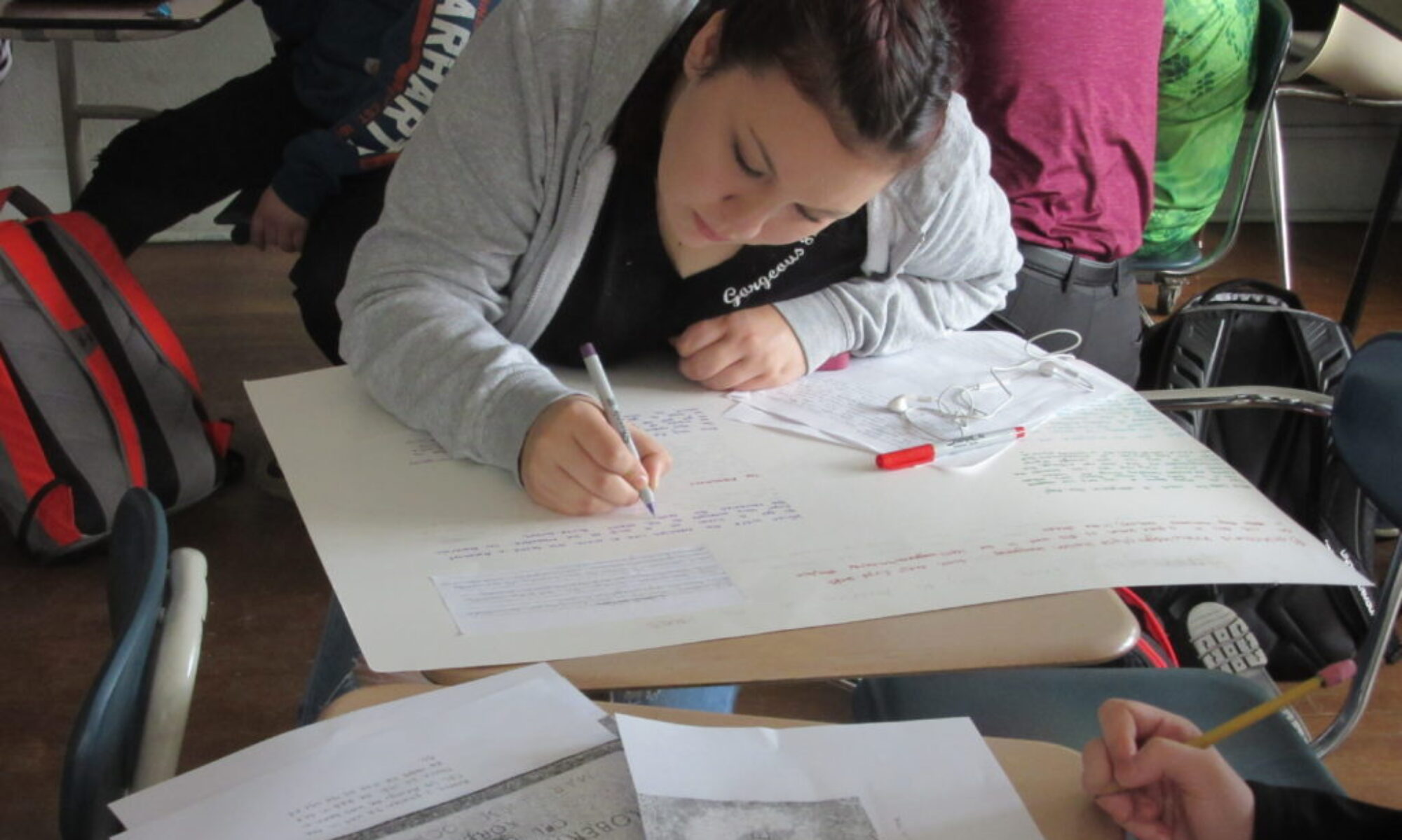

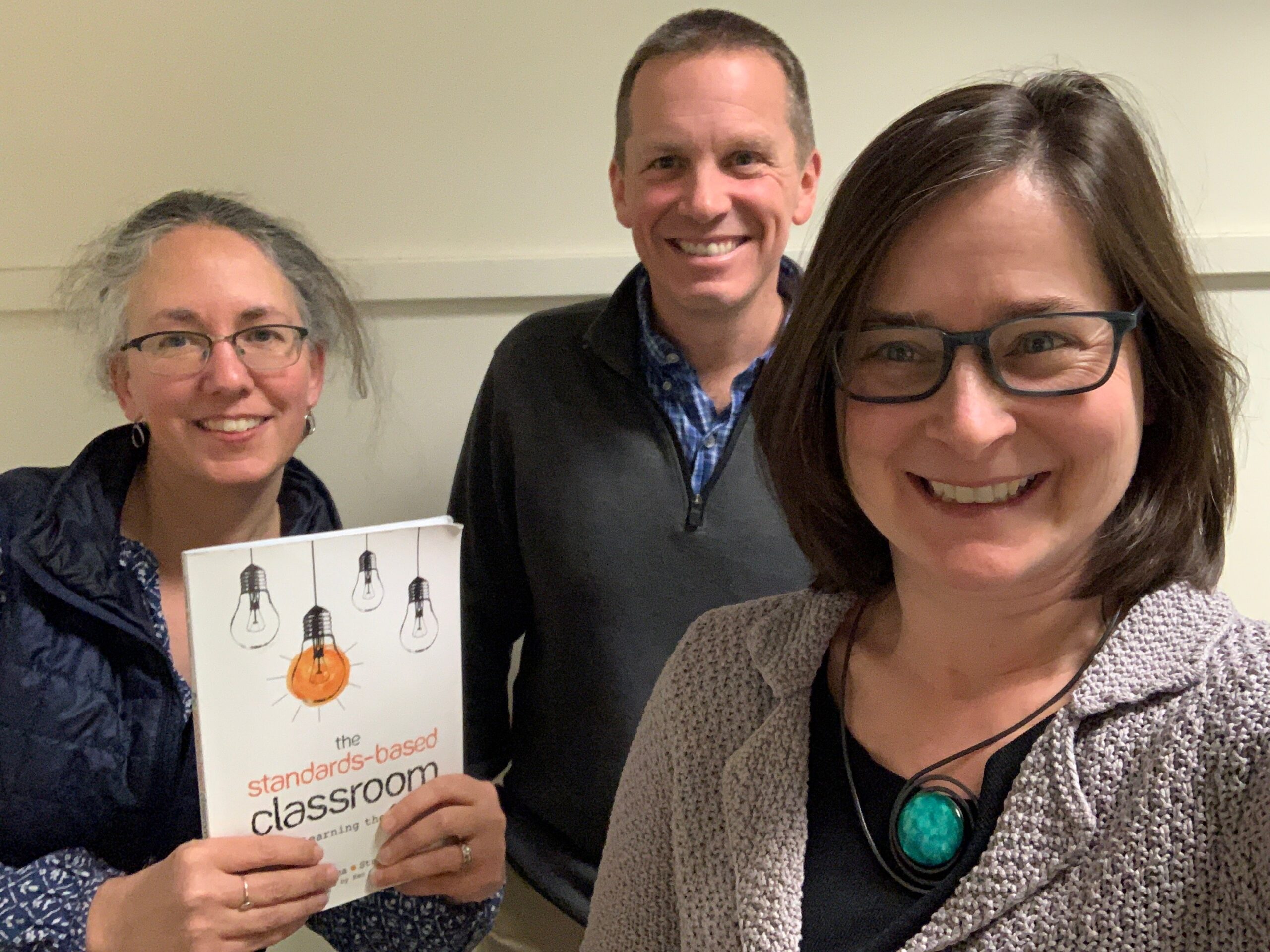
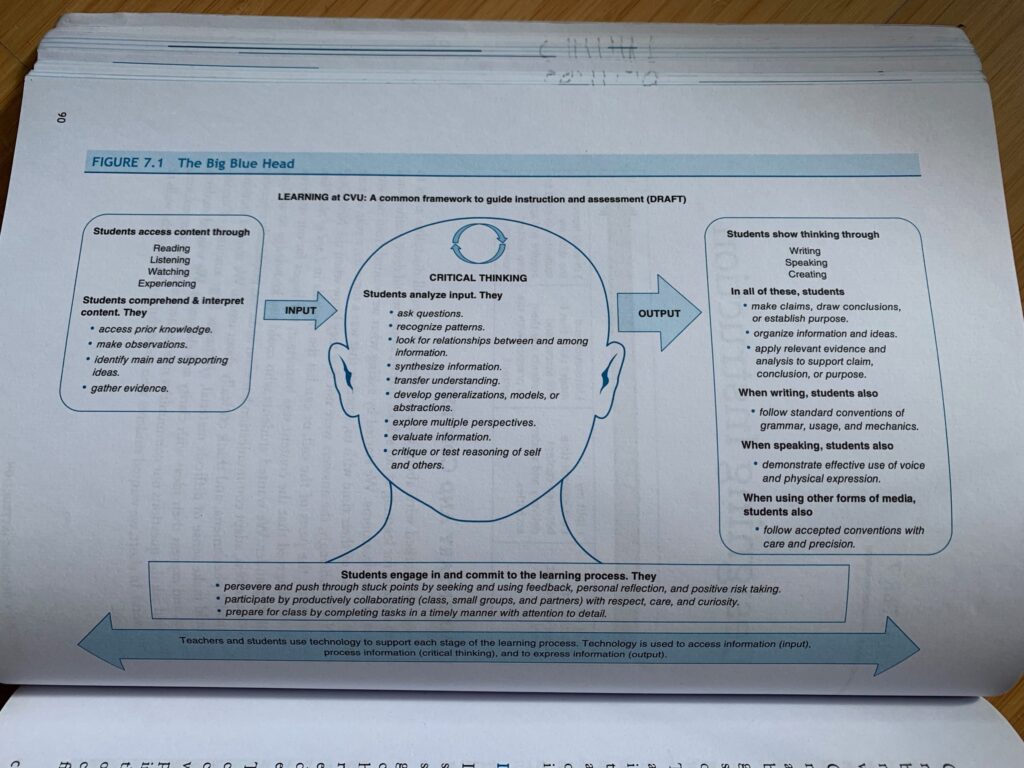
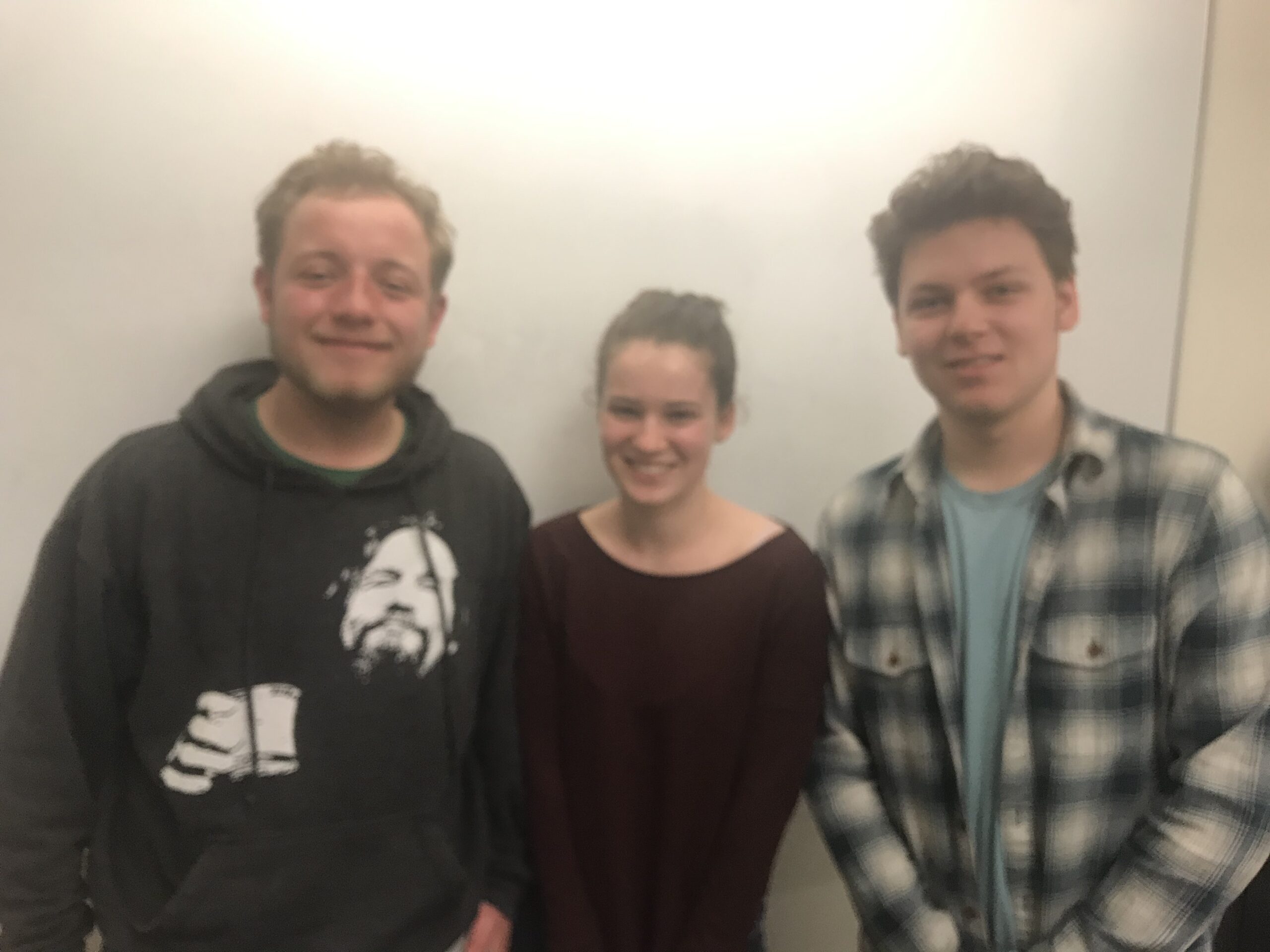

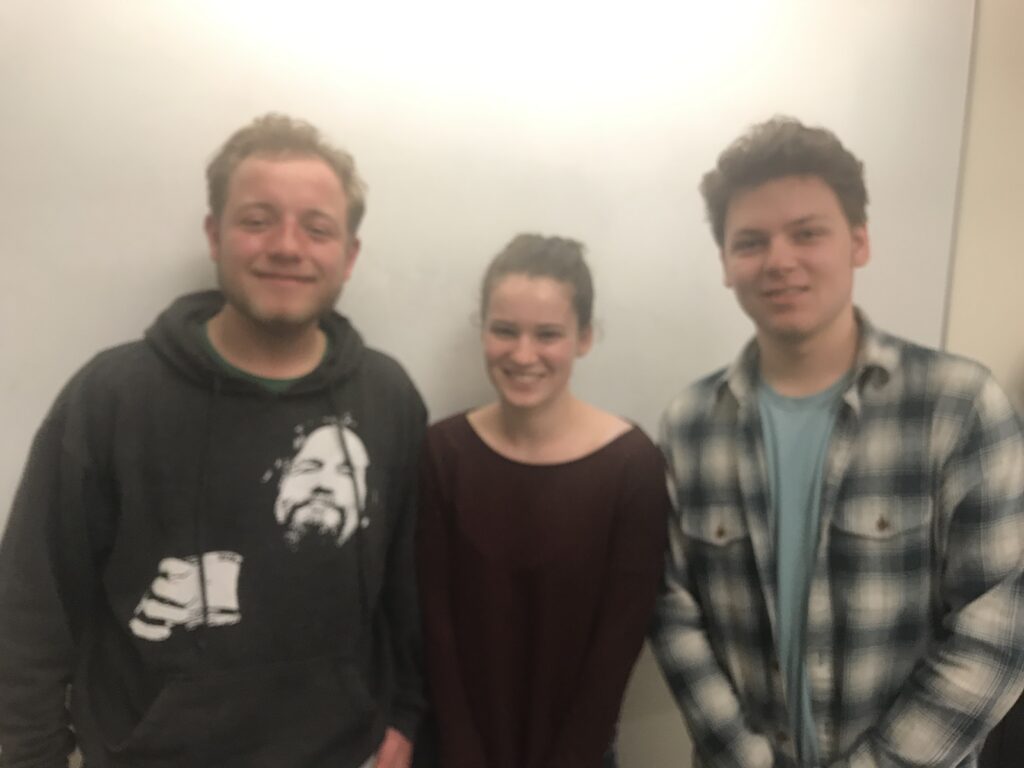
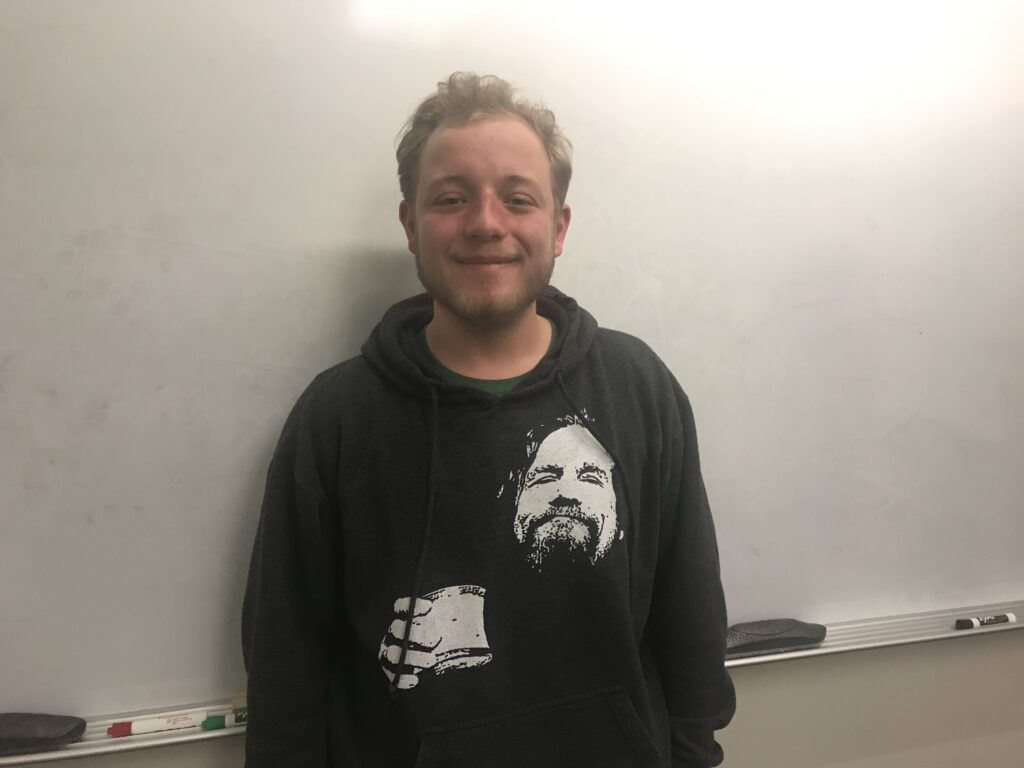
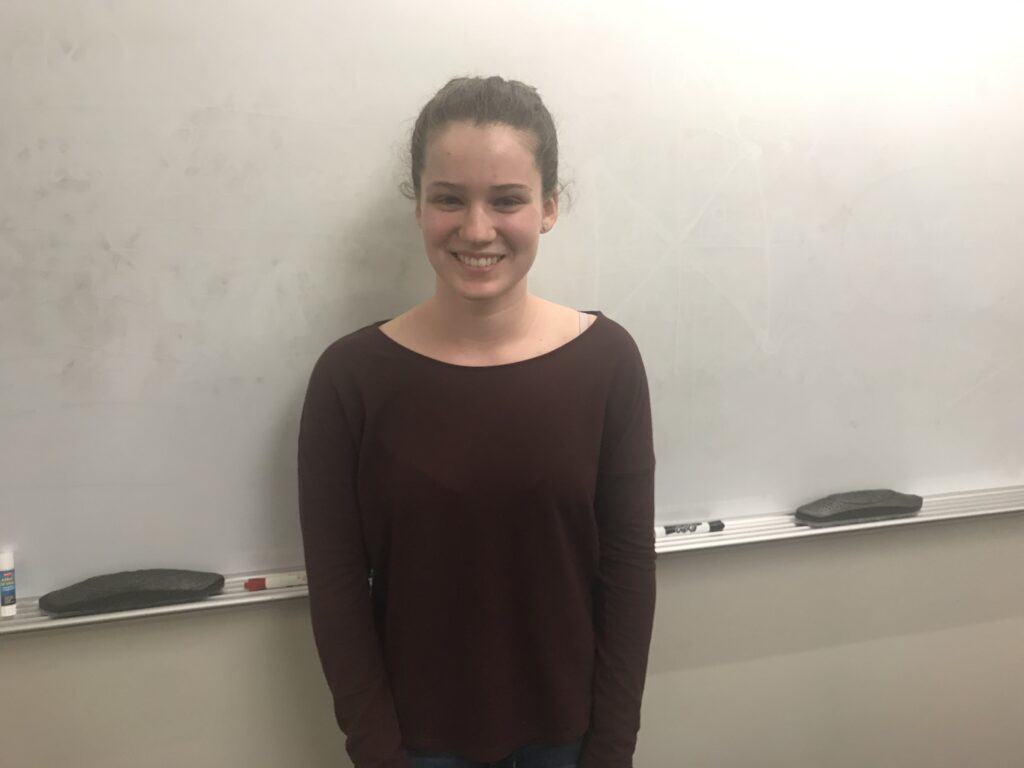
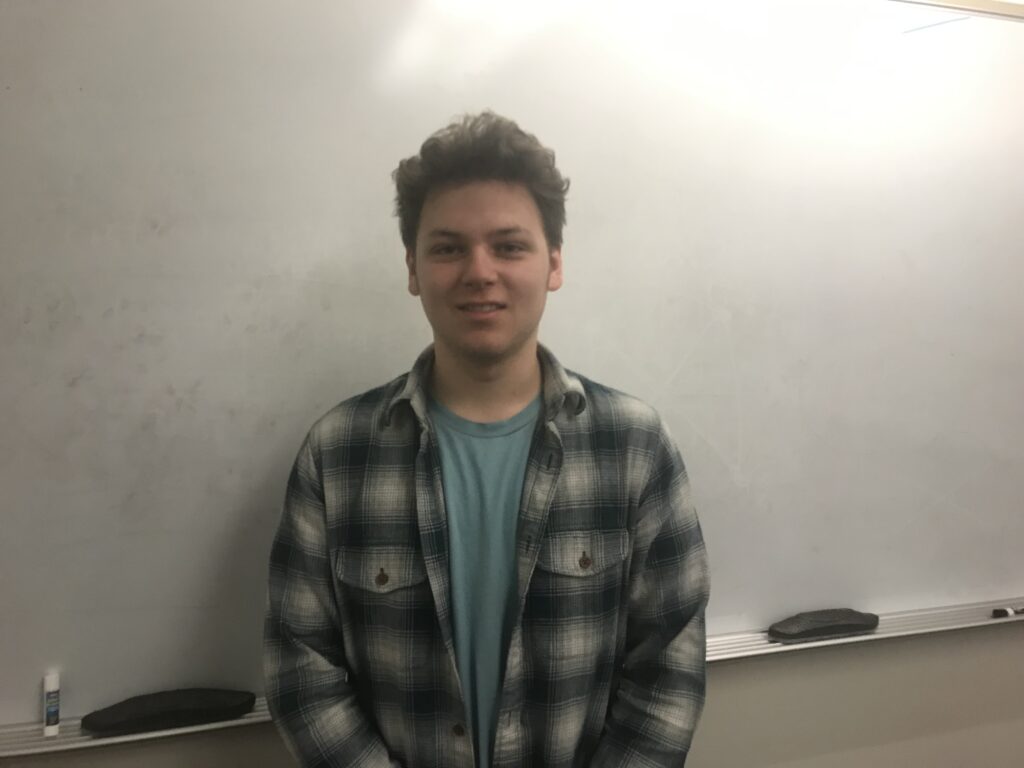

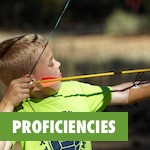
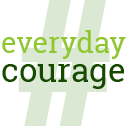 So much of the change we need to see right now can be kicked off by starting conversations with members of your community.
So much of the change we need to see right now can be kicked off by starting conversations with members of your community.